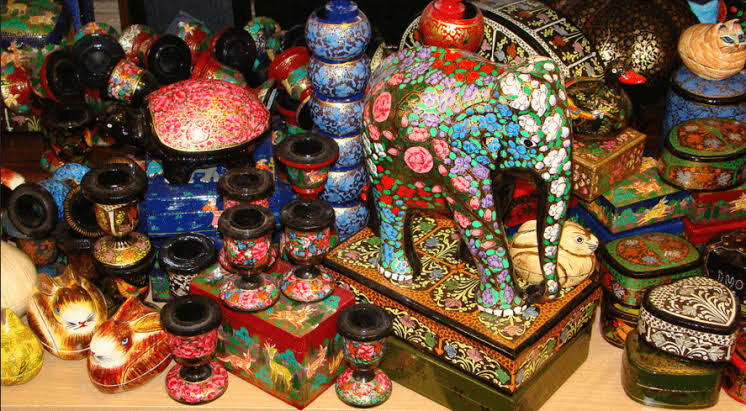
Kashmir’s handloom and handicraft exports have more than doubled over the past two years, with export figures surpassing Rs 1100 crores.
Artisan on work on a loom weaving Kashmir Carpet using a unique ‘Zari’ technology, incorporating a metallic thread and multiple colours to make the iconic craft noticeable in the International market
According to figures, exports surged from Rs 563 crore in 2021-22 to a remarkable Rs 1,162 crore in 2023-24, reflecting a robust growth trajectory.
The sharp increase highlights the rising global demand for Kashmiri craftsmanship, renowned for its intricate designs and high-quality materials.
Figures suggest that against Rs 165.98 crore in 2021-22, shawls worth Rs 424.20 crore were exported in the last fiscal year. Similarly, against Rs 251.05 crore in 2021-22, carpets worth Rs 357.21 crore were exported in 2022-23.
Other handicrafts and handloom items also witnessed a surge in exports, especially after the government promoted and preserved their authenticity by issuing Geographic Indication (GI) tags to the prized crafts.
Artisans attribute this growth to a combination of factors: enhanced global awareness of Kashmiri crafts, improved marketing strategies, and strengthened export channels.
“Government initiatives and support have also played a crucial role in this surge. Policies aimed at promoting exports and providing incentives to the handicraft sector have contributed to the sector’s expansion,” said Khalid Ahmad Bhat, a Pashmina artisan.
He said the promotion and enhancement of exhibitions have contributed to the growth of handicraft sales across India as well.
“We have a good demand also. We get orders from various states, with people preferring to buy Kashmir handicrafts with GI tags. This increase in demand has boosted production as well,” Bhat said.
Officials said the government has taken various initiatives to promote and market Kashmir handicrafts worldwide. “From exhibitions to promotional campaigns, the department has taken various initiatives to promote Kashmir handicrafts. The GI tag proved to be a game changer as demand increased, subsequently enhancing the exports of handicrafts to various countries. Currently, we have a good demand for handicrafts from the Gulf, Europe, and other nations,” they said. (KNO)




